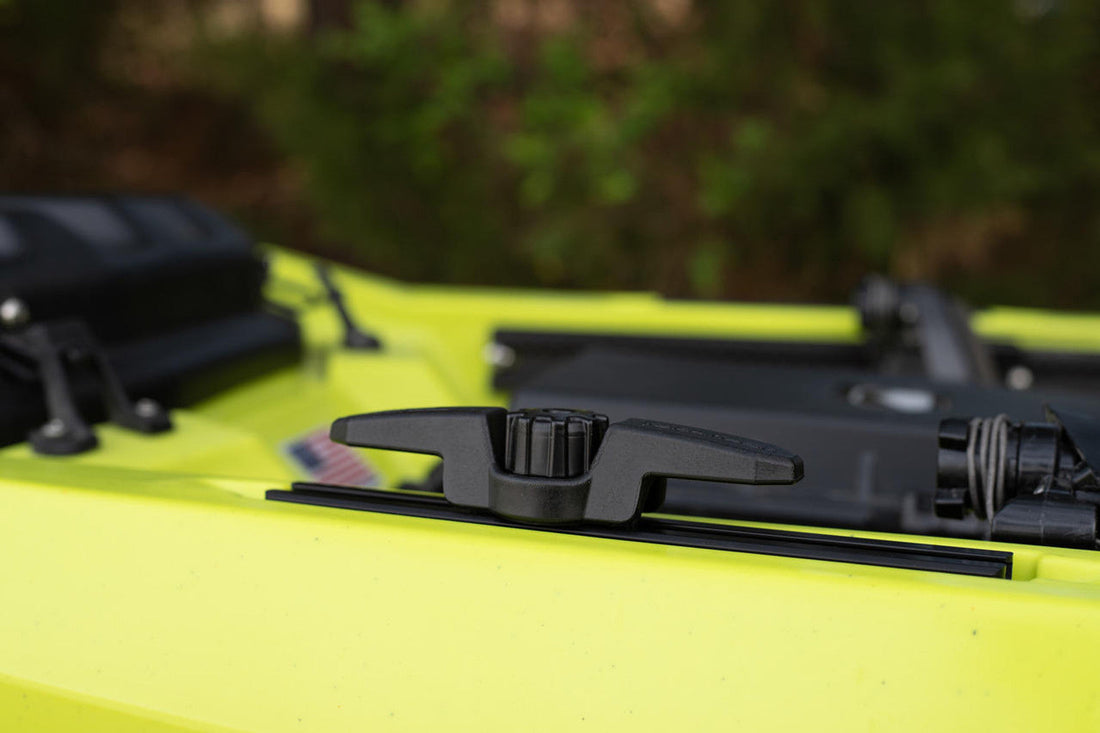Introduction
As kayak fishing continues to gain popularity in 2025, having the right gear is essential for a successful and enjoyable experience on the water. Whether you're a seasoned angler or just starting out, this ultimate checklist will guide you through the must-have kayak fishing gear to ensure you gear up for success. With the right equipment, not only will you improve your catch rates, but you'll also experience the thrill of fishing from a kayak, where you can access waters that larger boats can't reach.
1. Kayak Selection
The foundation of your kayak fishing experience starts with selecting the right kayak. There are various types available, and your choice can significantly impact your comfort and success on the water.
- Type: Choose between sit-on-top or sit-in kayaks based on comfort and fishing needs. Sit-on-top kayaks offer greater stability and ease of entry and exit, making them popular among anglers.
- Size: Consider a kayak that offers enough space for your gear and the ability to maneuver. A longer kayak may track better, while a shorter model can be more agile.
- Stability: Look for kayaks with a wide hull for better stability while fishing. Stability is crucial when casting, reeling in fish, and even when standing to fish.
- Weight Capacity: Ensure the kayak can support your weight plus additional gear, which is vital for safety and performance.
2. Fishing Rod and Reel
Your fishing rod and reel are your primary tools for catching fish. Choosing the right combination can make a significant difference in your success.
- Rod Length: A rod between 6 to 7 feet is ideal for kayak fishing, providing a good balance of casting distance and control.
- Reel Type: Spinning reels are commonly preferred for their ease of use and versatility. They handle various fishing techniques and are ideal for beginners.
- Line Weight: Choose a line that suits the type of fish you are targeting. Lighter lines are better for finesse fishing, while heavier lines provide strength for larger species.
- Rod Material: Graphite or composite rods are lightweight and sensitive, making them great choices for kayak fishing.
3. Tackle and Bait
Having the right tackle and bait is crucial for attracting fish. Here’s what you need to pack:
- Tackle Box: A waterproof tackle box to keep your lures, hooks, and other essentials organized. Consider a box with compartments for easy access.
- Bait: Live bait or lures should match the species you are aiming to catch. Research local species and their preferred bait to increase your chances of a good haul.
- Tools: Include pliers, scissors, and a fish gripper for convenience. A multi-tool can also be handy for various tasks.
- Extra Hooks and Weights: Always have backup hooks and weights in various sizes to adapt to different fishing conditions.
4. Safety Gear
Your safety should always be a priority while kayaking. Equip yourself with essential safety gear:
- Personal Flotation Device (PFD): Always wear a coast guard-approved PFD that fits well. Look for one designed for fishing, which often includes pockets for gear.
- Whistle: A whistle for signaling in case of emergencies. It’s a simple yet effective way to attract attention if needed.
- First Aid Kit: Pack a basic first aid kit for any minor injuries. Include antiseptic wipes, adhesive bandages, and gauze.
- Emergency Plan: Inform someone about your fishing plans and expected return time. Carry a communication device, such as a waterproof phone case or a VHF radio.
5. Fishing Accessories
There are various accessories that can enhance your fishing experience from a kayak:
- Anchor: A lightweight anchor to keep your kayak stable while fishing. Consider a collapsible anchor for easy storage.
- Rod Holders: Install rod holders to free your hands while reeling in fish. Some kayaks come with built-in holders, while others may require aftermarket accessories.
- Cooler: A small cooler for keeping your catch fresh and drinks cold. Look for one that fits well in your kayak without compromising stability.
- Landing Net: A landing net can help you catch fish safely and without injury, especially when fishing from a kayak.
6. Additional Equipment
Beyond the basics, these additional items can greatly enhance your kayak fishing experience:
- Dry Bags: Protect your gear from water with waterproof dry bags. They are essential for keeping your electronics and clothing dry.
- Fish Finder: Consider a portable fish finder to locate fish more easily. These devices can help you identify underwater structures and schools of fish.
- Sun Protection: Sunscreen, hats, and sunglasses to protect against UV rays. A wide-brimmed hat can provide shade and keep you comfortable.
- Comfortable Clothing: Wear moisture-wicking, quick-drying clothing to stay comfortable. Layering is key to adjusting to changing weather conditions.
7. Maintenance and Care
Maintaining your gear is crucial for longevity and performance. Here are some tips:
- Regular Inspections: Check your kayak and gear regularly for wear and tear. Look for cracks, leaks, or missing parts.
- Cleaning: Rinse your gear with fresh water after each trip to remove salt, dirt, and grime that can cause damage.
- Storage: Store your kayak in a cool, dry place, out of direct sunlight. Consider using a kayak cover to protect it from UV rays and environmental damage.
Conclusion
Equipping yourself with the right kayak fishing gear is vital for a successful outing on the water. By following this comprehensive checklist, you'll be well-prepared to tackle the challenges of kayak fishing in 2025. Remember that the best gear not only enhances your fishing experience but also ensures your safety and comfort while enjoying the great outdoors. So gear up, plan your next fishing adventure, and make the most of your time on the water!

